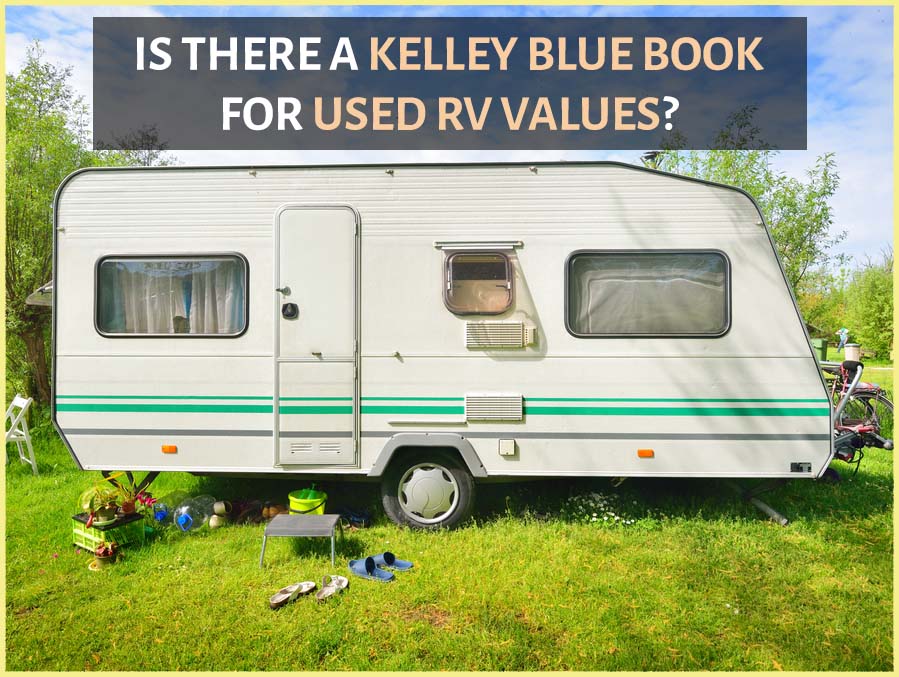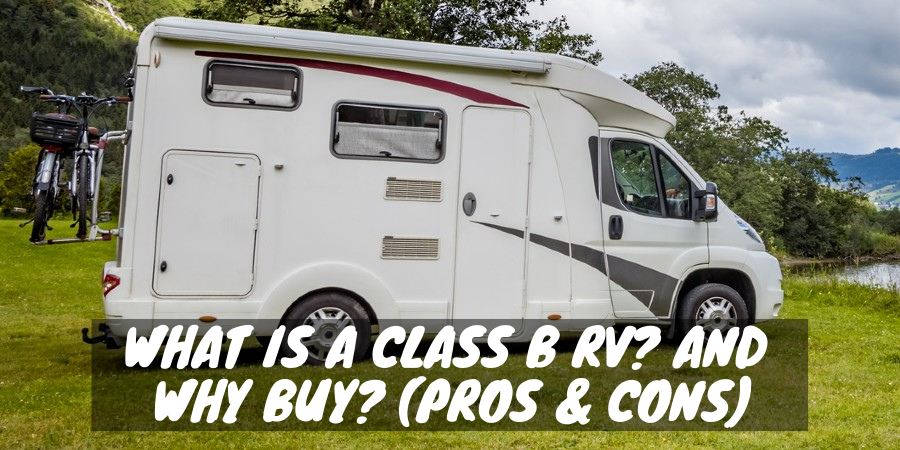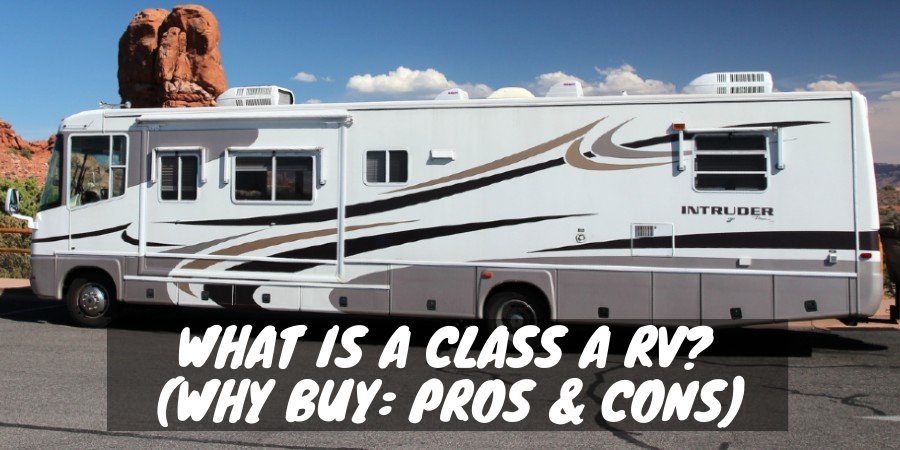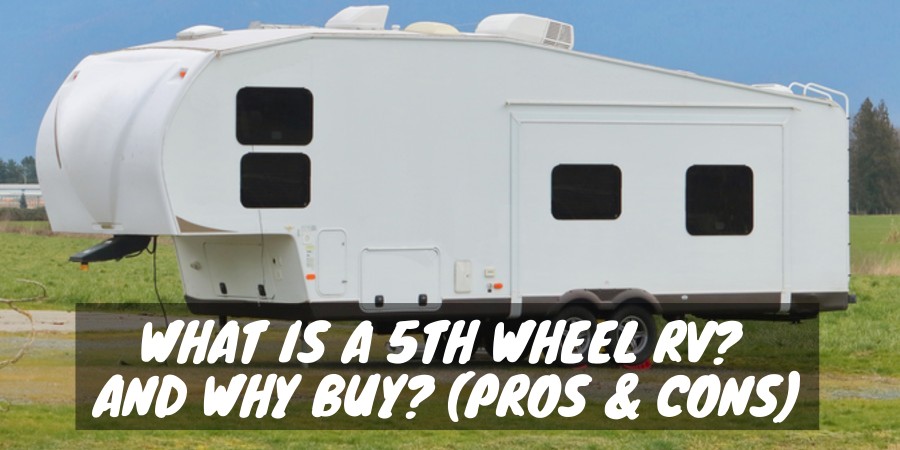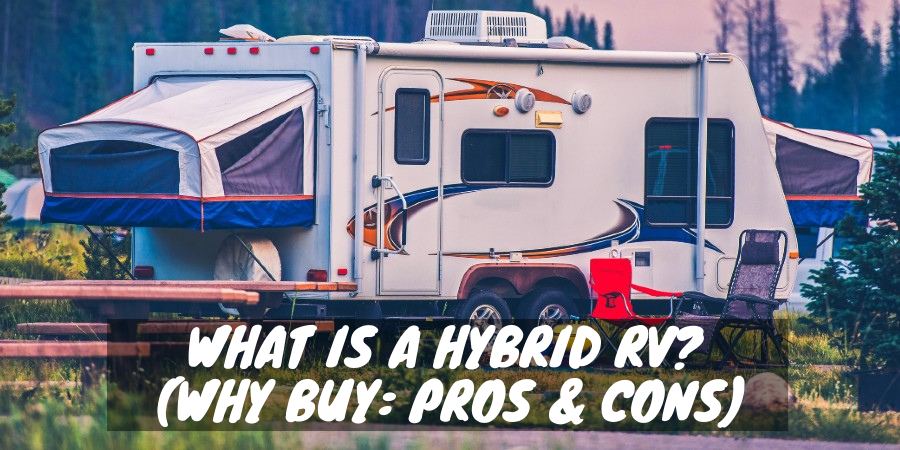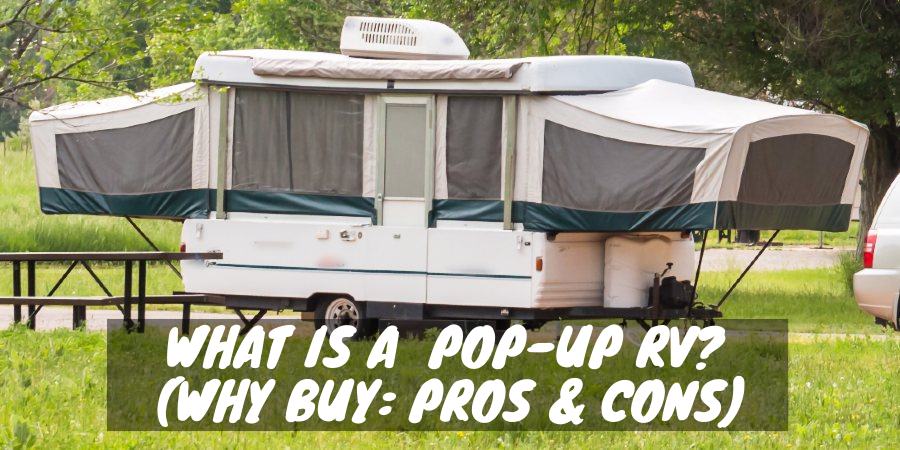Updated on February 6th, 2024
If you’re looking to buy, trade, or sell a used RV, you may wonder if there’s a Kelley Blue Book for used RV values to help you get the best price.
Unfortunately, Kelley Blue Book does not offer an RV valuation guide anymore and only focuses on automobiles. Luckily, there are other options available to help you learn the value of any particular RV.
The National Automobile Dealers’ Association (NADA) offers general pricing suggestions for the value of all types of RVs, including:
- Motorhomes
- Travel Trailers and Pop-Up Campers
- Fifth-Wheels
- Truck Campers
- Park Models
The NADA is an excellent starting point to determine RV value, but many other factors play a role in a final selling or buying price, so stick around to find out more.
How to Determine RV Value

RVs are unlike passenger cars in that even “standard” features in new models are vastly different across the board.
New RVs often have options or packages buyers can add that confuse the resale value even more.
Within the first few years of ownership, most RV users customize their camper in some way, whether it’s changing the flooring, removing furniture, or swapping out the refrigerator.
Trying to figure out the worth of a camper or RV is challenging due to the vast array of brands, models, types, custom features, and even the region where it’s for sale.
Factors That Affect RV Values
Brand of RV and Baseline Price
The brand of your RV does play a role in resale value. Jayco, Airstream, and Tiffin are some of the top manufacturers with consistently high resale value.
Thor and current models of Coachman RVs have lower resale value due to technical issues with the engine or poor-quality builds the manufacturers can’t seem to eliminate.
RV Model and Resale Demand
A good model with a convenient floor plan will command more value than one with a poor interior design.
NADA and other RV valuation services base part of their estimates upon which models sell the fastest. The models that have the highest demand will bring a better price.
RV Age Can Be a Benefit or a Hindrance in Value

It only makes sense that the older the RV, the lower the value, but keep in mind that a well-maintained camper of any age can demand a higher price.
Vintage campers are all the rage, and people are snapping them up, so having the mechanics and roof in great shape will increase overall value.
RV Mileage and Maintenance Factors
Along with age comes mileage. A motorhome with low miles is a big selling point, as engine repairs get costly as miles pile up.
Proof of regular engine maintenance can increase value as it ensures the owner didn’t neglect the RV.
For example, I bought a 30-year-old motorhome with 20,000 miles on it based on the seller having documentation of yearly servicing and any repairs made within the camper. Seven years later, the engine still performs like a champ.
On the other hand, you may purchase a 5-year-old motorhome with 60,000 miles on it and have continual breakdowns even if the seller swears the engine is in great shape.
Wear and tear over miles of roadways also affects the value of travel trailers. But, with no odometer keeping track of how many miles it’s been pulled, it’s up to an honest seller to inform a buyer of how much use is under its belt.
RV Condition Controls Price
A clean, well-kept, leak-proof RV will demand more value than one with peeling decals, a worn exterior paint job, and lots of roof or slide patches.
Likewise, the interior should have nice flooring without stains or scuffs. The kitchen and bathroom fixtures should have no corrosion, and the furniture should look crisp and not worn.
When a camper shows signs of neglect inside and out, it lowers the value no matter how new the model.
Size Matters in RV Value
The larger the RV, the more value it will hold, as most recreational RVers enjoy the extra space and will pay more for it.
Smaller RVs, such as Class B motorhomes or travel trailers in the 15 to 25-foot range, also bring higher prices as they are much easier to drive or pull and fit into nearly all types of campgrounds.
RVs that are very small or very large can sometimes take a hit on the resale price as there is a much smaller market of individuals looking for that 12-foot teardrop camper or that 45-foot luxury motorcoach.
Interior Layout Plays a Role in Value
The traffic flow and storage capability of the RV will affect value tremendously.
Thoughtful design makes the most of available space while keeping the floorplan easy to navigate. When an RV can showcase a comfortable and easy-to-use interior, the more it’s worth to buyers.
Don’t expect as much value if you have to squeeze and contort your body through a tight camper with hard-to-access storage compartments.
RV Customization and Value

Most RV customization will increase the value over NADA price estimates as they typically make the camper nicer looking, more comfortable, or more efficient.
Removing and replacing RV dinette booths with something more functional or upgrading to an on-demand water heater will help the resale value.
But, some customization will detract from value, such as painting all the cabinets hot pink. Changes made to a camper to suit a specific personal taste translate into extra work for the buyer, reducing its value.
Freebies That Come With the RV
Many items that come with a used RV add value that you may not take into consideration.
Items such as an RV-specific GPS system cost several hundred dollars.
An emergency RV repair kit can house all types of essential items like plumbing fittings, PEX tools, a tire repair kit, hoses, belts, pressure relief valves, and more that are priceless when you need them immediately.
Even a quality surge protector and electrical monitor costs around 0 (and sometimes more) and can save thousands by preventing electrical meltdowns within the RV.
Location of the RV Determines Worth
Regional demands for RVs affect value more than you think. The time of year also brings adjustments in RV pricing.
In areas of the country with temperate weather, you can expect RV resale pricing to be generally higher as there is greater demand for all types of units as people can camp year-round.
In cold, northern climates, you’ll find sales prices lower from fall through early spring as fewer people are looking to purchase a camper they can’t use until summer.
How Much Is My RV Worth?

When trying to determine what any RV is worth, you should start by visiting the NADA website.
Follow the instructions to select the RV type, brand, and other pertinent information you know about the camper.
The best part about the NADA RV price guide is that they have information on RV brands and models that are no longer in operation, which is helpful when trying to price old campers.
Another resource to find a reasonable RV value is to check out your local RV Trader publication and search for comparable campers to the one that interests you.
If there’s an RV dealer near you, go ahead and browse used campers similar to the one you’re thinking of buying or selling to help you narrow down its value.
eBay also has a search engine for you to find completed RV listings to help you see what other similar RVs have sold for. If you go this route, try to locate sales within your region of the country for a more accurate assessment.
Seeing what others set for an RV price or what sellers have gotten for an RV can help you cross-reference with the NADA guides to pinpoint the right price better.
RV Depreciation Facts You Should Know
Statistics show that RV pricing depreciation is relatively consistent and can be a great tool to help you figure out the value.
J.D. Power states that most new RVs of any type or brand will depreciate on average 20% after the first year, with around a 5-8% increase every subsequent year.
Dealers typically offer a trade-in value on your RV around 15% lower than the NADA low retail price suggestion, so they have room for extra profit. When you understand this tactic, you can negotiate for a higher trade-in value.
The type of RV also determines depreciation, with Class A motorhomes losing 30% value after a few years, while after five years, you can expect a Class C to lose around 38% and a travel trailer to depreciate approximately 45%.
Class C motorhomes in the 30-foot range depreciate the least in the drivable recreational vehicle category. It takes this type and size of RV ten years to lose half its value.
In comparison, a ten-year-old fifth-wheel RV will depreciate by a whopping 71% on average.
You can use a general RV depreciation chart to help you figure out what a used camper is worth by type, assuming it’s in good condition.
Why You Should Know Your RV Value

It’s important to know RV value to:
- Determine a fair sale price
- Get the most value at trade-in at an RV dealership
- Secure the proper amount of insurance coverage
No one wants to overpay for an RV, nor do sellers want to shortchange themselves, so figuring out a fair value based on current data makes private sales much more straightforward.
Getting the most out of your RV trade-in at a dealership can help lower the final cost of your new RV. If you go in with no idea of what your camper is worth, the dealership may downplay the value to increase its profit.
Lastly, it’s critical to have the right amount of insurance coverage on your RV so you can repair or replace it when damage occurs without taking a massive hit to your wallet.
Do be aware that many websites that value RVs can be confusing, as they often add the term Kelley Blue Book in their title or somewhere in the text.
While a “blue book value” is a common way to express a method to price a vehicle, the term is a trademark of Kelley Blue Book (KBB). Since KBB is no longer offering RV values, websites may use the KBB name or the phrase “blue book” to draw you to their services.
Final Thoughts
While there isn’t a Kelley Blue Book for motorhomes or trailers, there are other methods to arrive at a fair market RV value for any camper style.
By knowing what helps and hurts value and comparing prices among NADA, RV Trader, and local dealers, you can combine all the information to know the right price for any RV.
Can Kelley Blue Book Be Trusted? (Video)
Related Questions
1. Can you use the Kelley Blue Book to determine the value of your used RV?
No, the Kelley Blue Book no longer provides valuation guides for RVs and is focused solely on automobiles. You can use other tools like the National Automobile Dealers’ Association (NADA) for this purpose.
2. What factors affect the value of an RV?
There are several factors, including the brand, model, age, mileage, condition, size, interior layout, and any customization of the RV. Also, the location where you’re selling or buying the RV can impact the price. For example, regions with temperate weather may see higher RV resale pricing due to year-round camping possibilities.
3. Can the age of an RV benefit its value?
Yes, while it’s generally true that the older the RV, the lower its value, a well-maintained RV, regardless of age, can demand a higher price. Vintage campers are quite popular, and if well-maintained, they can have a high resale value.
4. How does mileage affect the value of an RV?
Low mileage on a motorhome can be a big selling point, as engine repairs can get costly with more miles. Proof of regular engine maintenance can increase value, indicating the owner has taken good care of the RV.
5. How can you get a rough idea of what your used RV is worth?
The NADA website is a good starting point. It provides information on RV brands and models that are no longer in operation, which is helpful for pricing old campers. You can also check local RV Trader publications, visit nearby RV dealerships, and search completed RV listings on eBay. Always try to cross-reference with multiple sources to pinpoint the right price.

 About Us Subscriptions Already a Subscribersyracuse.com Sections MobileMore on syracuse.com Follow Us
About Us Subscriptions Already a Subscribersyracuse.com Sections MobileMore on syracuse.com Follow UsAd Choices





